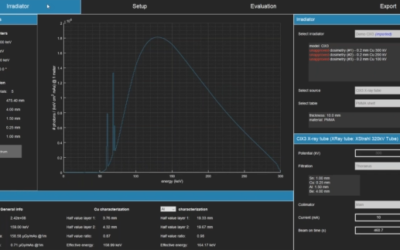During the recent meeting of the European Society of Radiotherapy and Oncology, there was a focus on the treatment of complex skin cancer targets using radiation therapy. Several treatment modalities were discussed in some detail, including brachytherapy, electrons, VMAT, and superficial and orthovoltage treatment.
In particular, the presentation from Dr. Elizabeth Barnes on November 28, 2020, provided a discussion about treatment selection criteria and highlighted cases where she concluded that superficial and orthovoltage treatment was clinically appropriate. Many radiation oncologists and dermatologists often do not see a role for superficial and orthovoltage treatments when compared to other modalities.
Dr. Barnes briefly covered her rationale in choosing one treatment modality over another for treating certain types of non-melanoma skin cancer. She highlighted the reduced penumbra with kV treatments, which leads to a reduced clinical margin, thereby sparing the volume of normal tissue that is treated.
Dr. Barnes highlighted various cases and discussed the selection of treatment:
- A lower eyelid BCC, which she elected to treat with kV photons due to the ease of eye shielding with kV compared with electrons
- A 100-year-old lady who had a SCC on her right temple who was treated with kV because this modality allowed her to be treated in her wheelchair rather than having to transfer onto the LINAC couch. The patient also had difficulties in tolerating a mask and kV allowed her to be treated without the need for one.
- A 75-year-old patient with a small BCC on the nasal ala who was treated with kV as it allowed a small field due to the reduced margin needed with kV compared with electrons.
Besides providing treatment for non-melanoma skin cancer, superficial and orthovoltage radiation therapy can also be used to treat hypoproliferative benign diseases such as keloid scarring, Dupuytren’s Contracture, and Ledderhose Disease, as well as provide palliation for secondary lesions.







